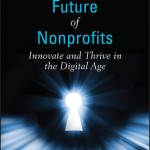| Octane options in west TX |
First, let me say that as an open-road loving, completely car-dependent American, I have been pumping my own gas since I was 16. I’m not the squeamish type or afraid to get my hands dirty.
But whatever happened to full service gas stations? While popping my own hood and adding a quart of 10W-30 is a great learning experience for my daughter to watch me do, it’s not quite how I’d like to spend my morning when I’m already dressed for work. What I wouldn’t have given for just one full-service gas station anywhere on my commute!
Mornings like these make me think of the “old” ways when service wasn’t a four-letter at the gas station. But is it really an “old” idea to crave a deeper interaction with the company with which you do business?
In an age where exceptional customer service, rather than the product itself, is the key differentiator for so many companies, why are sellers expecting consumers to be more and more self-service?
While it may have started in the highly price-sensitive, highly commoditized market of filling stations, my missing gas jockey isn’t the only disappearing dinosaur. Consumers are being completely self-provisioned even in traditional, brick-and-mortar stores. I have often used the expeditious self-checkout at the grocery store and innovative retailers, such as Apple, are working hard to ensure I don’t even need to wait in that line. With a smartphone and the right app, customers can scan and pay and walk out without speaking to an employee or touching a single piece of store equipment.
Somehow, in the race to “cloud-ify” the purchase/transaction experience, companies have lost sight of how to authentically connect with customers. The benefits of this strategy, particularly during busy, holiday shopping times, are obvious. But how does it affect customers?
I rely on the expertise of knowledgeable staff to help me choose the right product and help me use it the right way. At the gas station, that’s someone to check my oil and tire pressure as well as pump my gas, if I want it. At the grocery store, a balloon for my toddler and a few free samples would do the trick. Savvy consumers are willing to pay premium prices for premium experiences.
Rather than an anonymous, self-serve self-checkout where consumers are completely disconnected from the brand, companies who want to succeed should focus on creating added value around their services, connecting with their customers, and providing an experience that exceeds their customers’ expectations. Seriously, if there’s a pretty girl in a skirt and heels on her way to work – show some southern hospitality and have staff to pump her gas for her!

